How to Squeeze A Network Cable Without A Tool (Screddriver)
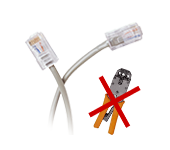
In this instruction I will show you how to crimp a LAN network cable and make an Internet cable with your own hands without tools. Instead of a crimper (special tool for crimping twisted pair in RJ-45) we will use an ordinary screwdriver. And for stripping the twisted pair – a knife.
In the article how to crimp a twisted pair in RJ-45 I showed the whole process using a crimper. And promised to prepare a guide on crimping Internet cable without crimping pliers. Here it’s simple: if you already have a special tool, then all these instructions you probably do not need, you are already in the topic. And if you are looking on the Internet, how to make a network cable with your own hands, you probably do not have a crimper. And you are not going to buy it, for the reason that you simply do not need it. The tool is not cheap, and buying it to crimp two connectors is not a good idea. So, you can do everything with a regular screwdriver and a knife. Yes, it may turn out a little kolkhozno and not the first time, but it will work. But it is budget-friendly and without outside help.
We will need such materials and tools:
- Twisted-pair cable itself. I took a small piece, you have the cable should be the necessary length. Buy a little with a reserve.
- RJ-45 connectors. To make one network cable, you need two connectors. But be sure to buy more. The connector is disposable. And if something does not work out the first time, you will have to go to the store again.
- Screwdriver, with which we will crimp the twisted pair into the RJ-45 connector.
- A knife for stripping the twisted pair.
- And preferably also wire cutters to trim the wires. You can also use wire cutters, which are usually on pliers. If you have neither wire cutters nor pliers, you can cut the cable with scissors, or a knife. It’s not very easy to get it right, but in a pinch you can.
This is the kit I have:
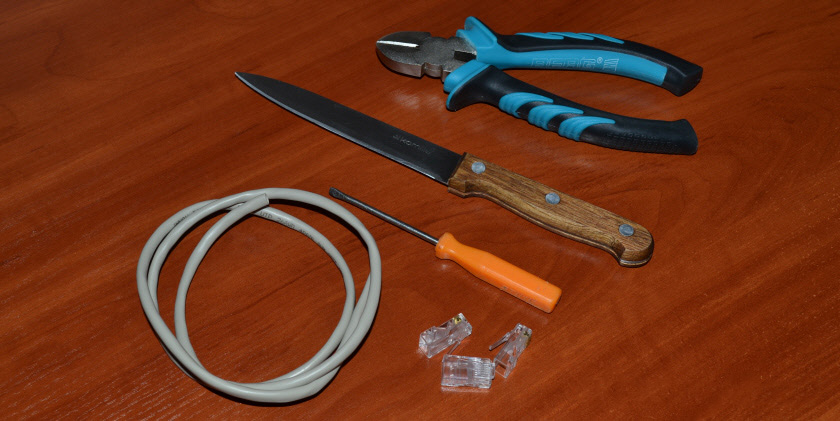
The knife I have is a bit big for such a case, but it doesn’t matter. The main thing is to be sharp 🙂
As it turned out (found out about it while writing this article), that there are so-called tool-less connectors. Interesting thing. With their help you can make an internet cable even without a screwdriver. You only need a knife for stripping the cable. They look like this (on the photo connector company SUPR):
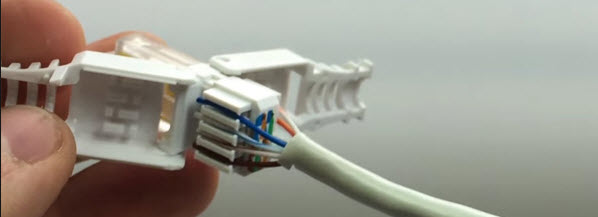
How they work: we strip the cable and insert it into the connector. There is even a diagram on the connector itself, where to insert which wire. Then we just snap it in and the cable is crimped. This thing is not very popular. I don’t even know if you can buy such a connector in a regular store. You have to ask.
Before we start crimping the twisted pair with our screwdriver, we need to decide on the scheme by which we will make the cable.
Schemes for crimping a LAN network cable
There are two ways in which you can make an Internet cable. Most likely you need the first method, direct crimp. Let’s understand in detail.
1
If you need a cable to connect a laptop, computer, TV, or other equipment to a router or modem, then you need to make a cable according to this scheme. This is a direct order of crimping. The simplest and most common way. Such a network cable, for example, comes with a router.
There are two ways of crimping: T568A and T568B. I did it according to the T568B scheme, which you can see below. It turns out that we crimp both connectors the same way.
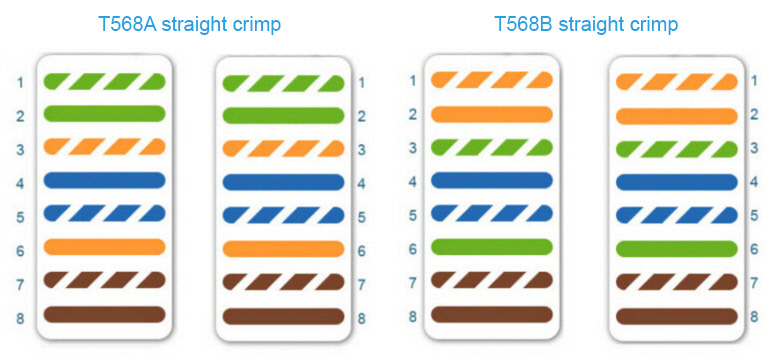
2
The second method is cross, or crossover. Such a cable is useful for connecting two computers directly (without a router).
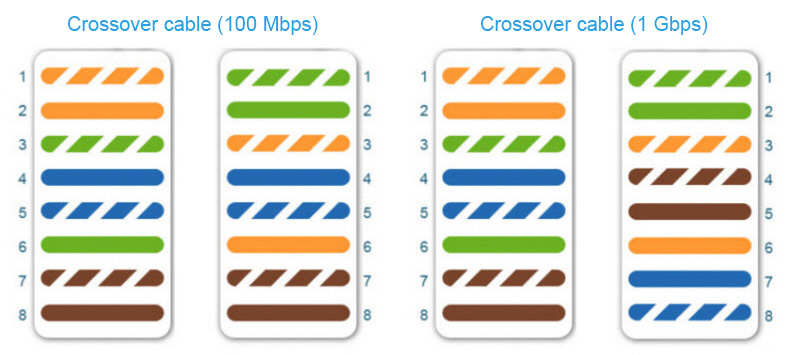
I think you have decided on the scheme. You can read more about it in the article: twisted pair: what is it? Schemes and methods of crimping twisted pair. I will make a simple cable (direct crimp) according to the scheme T568B.
Crimping twisted pair without a tool (crimper)
If you have everything you need, you can start making the cable. I will try to show everything as detailed and step by step as possible.
1
Remove the outer insulation from the twisted pair. About two centimeters. Gently cut the insulation in a circle and pull it off. Just be careful not to damage the insulation of the wires themselves.
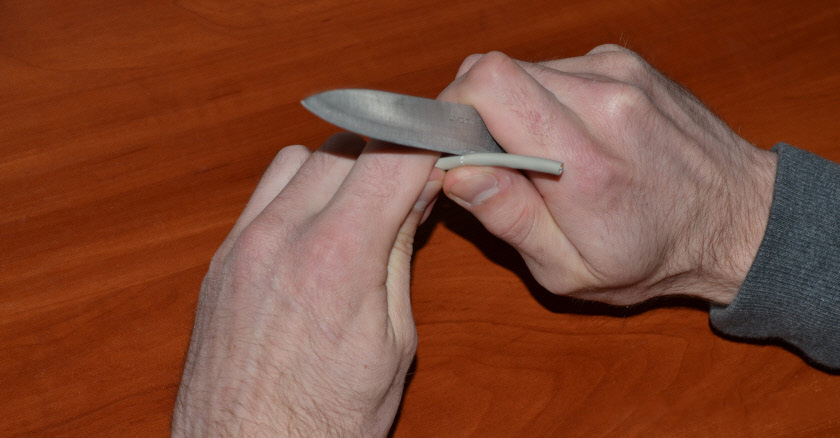
2
Straighten the wires and color-code them. According to the scheme you have chosen (photo above). It is desirable to arrange them so that they do not intertwine. I got it like this:
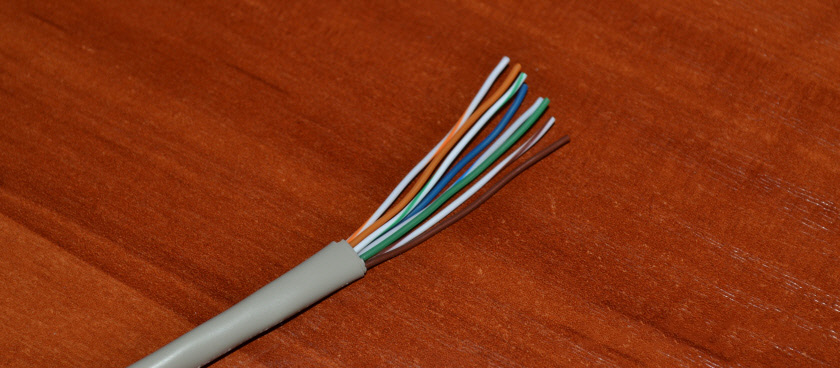
3
Next we need to trim the wires. Leave about a centimeter. I will do it with special cable cutters. As I wrote above, you can cut them with scissors, or a knife.
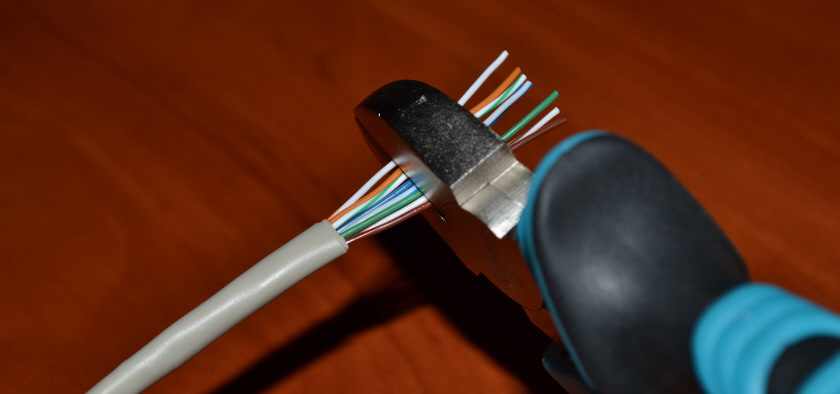
4
Check if the wires are correctly aligned according to the diagram, and insert them into the connector. The RJ-45 connector itself is held with the latch away from you. As on the photo below.
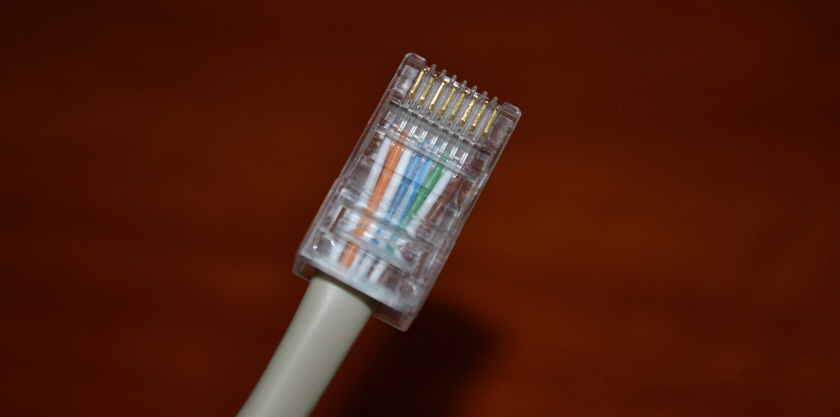
Insert the wires as far as they will go. They should go all the way in and rest against the front wall of the connector.
5
Once again check if the twisted pair is correctly inserted into the connector and start crimping. Take our screwdriver (maybe you have something else), and press the contacts one by one. Be careful not to hurt your hand!
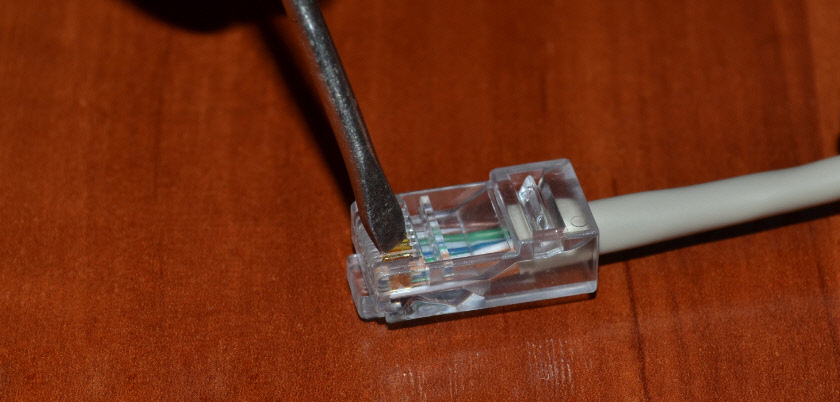
The contacts must be pressed in hard. So that they penetrate the cable. The contact itself should not just align with the connector body, but be slightly recessed into the body. It’s not the easiest thing to do. When I pressed the cable with a screwdriver, it had a hard time inserting into the LAN port of the router (but it was already working) and then I pressed the contacts with a screwdriver.
After I crimped each contact, I also snapped the cable retainer. It just pushes in and presses the outer insulation.
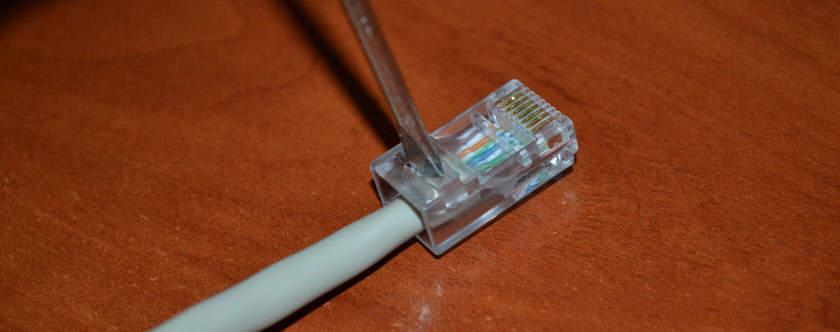
All done. Do the same thing on the other side of the cable. I got it like this:

As you can see, the pins themselves are a little damaged by the screwdriver. When crimping with a crimper there is no such damage.
I checked the cable by connecting the laptop to the router. Internet on the laptop appeared, which means that everything worked and works. I managed to make a network cable from the first time. Even without special tools, with a regular knife and screwdriver. I hope that everything worked out the same way for you.
What to do if the network cable does not work?
There may be such a thing. But I wouldn’t rush to blame it on the cable right away. It is quite possible that the problem is in the router, computer, or other device you are connecting. You need to check it out.
- Connect another device with a manufactured cable. If possible, test the devices with a different cable. To make sure it is the network cable we just crimped.
- Be sure to carefully check the sequence of wires in the connector according to the diagram.
- If you have mixed up the sequence of wires, then bite off the connector and redo it.
- If everything is according to the diagram, then take a screwdriver and press the contacts on the connector. It is quite possible that there is no contact.
That’s all. Write in the comments about your results, ask questions, and share tips. Good luck to everyone!

 SSID Wi-Fi Network on a Router. What is it and who is it needed?
SSID Wi-Fi Network on a Router. What is it and who is it needed?  What is vpn, who is it Needed and How to Use it?
What is vpn, who is it Needed and How to Use it? 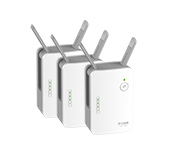 Two Repiters in One Wi-Fi Network. How to Connect Several Amplifiers to One Router?
Two Repiters in One Wi-Fi Network. How to Connect Several Amplifiers to One Router?  Speed in Mesh Wi-Fi Network. Does The Speed Between The Mesh System Modules Fall?
Speed in Mesh Wi-Fi Network. Does The Speed Between The Mesh System Modules Fall?